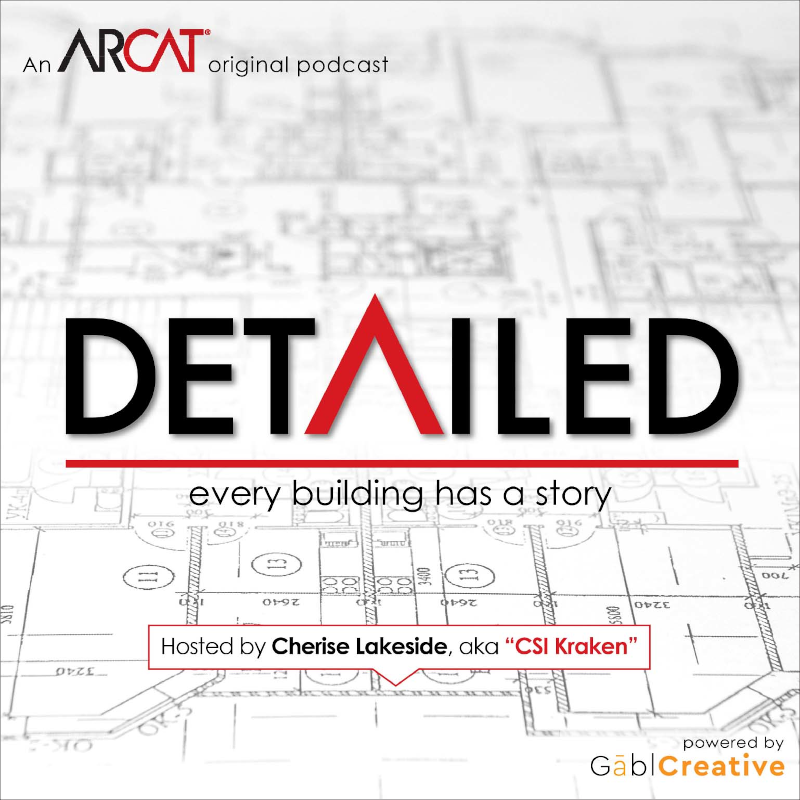|
Contributed by Michael Chambers In my 25-plus years as a specifier I have been an independent consultant and in-house project specifier. I have had the privilege of working with a wide variety of designers, project architects, and interior designers. I have developed specifications for projects ranging from room additions to a billion-dollar hospital. Recently on 4Specs.com, someone asked the question, “How to work effectively with Specification Writer? In my opinion and experience, the more knowledgeable a design professional is about specification processes, the more effectively they can work with specifiers. Probably the best project architect I have ever worked with was a gentleman at Ellerbe Becket in Minneapolis. He was incredibly knowledgeable about specification processes and how they integrated with drawings. He also hated writing specs. He would ask me the most insightful questions about what he was drawing and how it should be specified. He understood the process and how to make it work for his projects. In explaining to design professionals what they need to understand about specifications, I would ask them to consider the following issues and concepts. Quality Expectations Every design professional has expectations for a certain level of quality in their projects. One key element that is often overlooked or underestimated in projects is quality. How do you accomplish the design concept and protect your design intent? How do you indicate the levels of quality that are appropriate for your client’s needs and budget? Specifications, that’s how. Drawings have no qualitative aspects; they indicate size, shape, and relationship but not quality. Specifications are all about quality. They contain critical procedures and product information that allow the design professional to stay in control of the review and approval processes that affect the design concept. Also, the boring bit about formats and standardized places for information are critical in limiting omissions by acting as checklists and highly effective coordination tools. Communications
Construction documents are communication tools. They are how design professionals communicate design intent to the owner, authority having jurisdiction (AHJ), and contractors. They are both graphic and written documents. Each has an important role to play and ideally is part and parcel of a complementary document package. Drawings communicate quantities, location, layout, relationships, and dimensions. There is nothing qualitative about drawings or their contents. While notes and schedules are useful, they still do not have any real useful qualitative impact. Specifications communicate quality, methods, materials, and procedures by referencing industry standards, application procedures, fabrication requirements and installation instructions. Most importantly specifications establish the procedures in Division 01 that allow the design professionals to stay in charge of the project, protect their design intent, and maintain project integrity. Specifications have direct enforceability in a quality dispute. Drawings impact quality issues indirectly at best and generally, not at all. Professional Documentation Specifications are an integral and indispensable part of professional documentation for a building design. Construction documents should reflect the intensity, scope and type of project they document. Extensive drawings and full book specifications are not generally appropriate for a 2500 SF tenant improvement project. Just as floor plans with MEP information and general notes are not appropriate for a 400-bed hospital renovation. Specification products can and should be highly customized to reflect the project type and complexity. Understanding how outline specs and design narratives morph into DD and CD specs need to be understood by the entire design team. One of the specifiers’ key roles is to help facilitate the specification process throughout each project phase. Finally, above all else, implement and follow the primary CSI Principle of “Say it once say it right”. Duplication of information is the primary culprit in encouraging RFIs, substitutions, and change orders. As a specifier you can not only limit duplications in the specs but also in the drawings in your review and take-off process. Specifications and Contract Provisions Specifications are about products, processes, and procedures. They are not scope of work descriptions or a way to organize bids. The Project Manual documents critical process and procedural issues in Division 01. In my experience, design professionals’ lack of understanding of Division 01 is one of the primary reasons for the increase in project problems with RFIs, submittals, and substitutions. While Division 01 expands individual section requirements and connects General Conditions to specifications, Division 01 also contains all of the project procedures and processes that control the progress of the work. Payment procedures, alternatives, allowances, change orders, substitutions, submittals, quality control, construction waste management, project closeout, sustainability procedures, and the like. These are not just construction administration issues. The processes and procedures contained in Division 01 can and do dramatically impact the intent and integrity of the final design product. Proper Specifications Substantially Reduce Substitutions Finally, if nothing else will convince design professionals to use specifications to protect their design intent and work closely with the specifier, consider substitutions. Beyond incomplete drawings and lack of coordination nothing can trash a project faster than uncontrolled substitutions. Design professionals must understand the Division 01 procedures for product substitutions and how a bad specification can invite more substitutions. Never specify a sole source product. It is the number one creator of successful, project damaging substitutions. When possible, do the work to identify multiple products and manufacturers. It will tremendously reduce the number of substitutions per project. Work closely with the specifier to ensure that critical specification issues such as appropriate quality levels (apples for apples) are specified. Make certain that the specification is based on real technical issues, not features and benefits. In the end working effectively with the specifier can make a significant positive impact on the project’s design integrity and quality intent. (Editor's Note: Michael D. Chambers, FCSI, FAIA, CCS is Associate Vice President and Senior Project Specifier for HGA and is responsible for the specifications in the four California offices and is principal of MCA Specifications. Michael also sits on the CONSTRUCT Education Advisory Council with Let's Fix Construction Co-Founders, Cherise Lakeside and Eric D. Lussier. NEW FOR CONSTRUCT IN 2019! The NEW Product Rep University Program has been designed to meet the needs of Manufacturer's Representatives of Architectural Building Products, as integral members of the project team. The program features a full day of education (6 sessions) to help you stay up to date on current trends in the industry, and refine your interactions and relationships with design professionals. Get additional details on the Product Rep University here: www.constructshow.com/PRU Download a Product Rep University flyer here. CONSTRUCT will be held October 9 - 11, 2019 at the Gaylord National Resort & Convention Center in National Harbor, MD. Read more on CONSTRUCT here. )
4 Comments
Patrick Comerford
6/4/2019 01:53:45 pm
It is always nice to hear a seasoned practitioner in the industry speak with a helpful tone.
Reply
Khozema Kazi
6/11/2019 05:38:47 am
Precise and relevant.
Reply
8/1/2019 03:43:16 am
Awesome article keep it up in future and thanks for sharing with us.
Reply
8/12/2023 12:42:12 pm
It's time to embrace the power of a Sniping Bot. These automated tools utilize advanced algorithms to place bids with split-second precision, ensuring that you're always one step ahead of the competition. Don't leave your auction success to chance arm yourself with a Sniping Bot today.
Reply
Leave a Reply. |
AboutLet's Fix Construction is an avenue to offer creative solutions, separate myths from facts and erase misconceptions about the architecture, engineering and construction (AEC) industry. Check out Cherise's latest podcast
Get blog post notifications hereArchives
March 2022
Categories
All
|


 RSS Feed
RSS Feed
